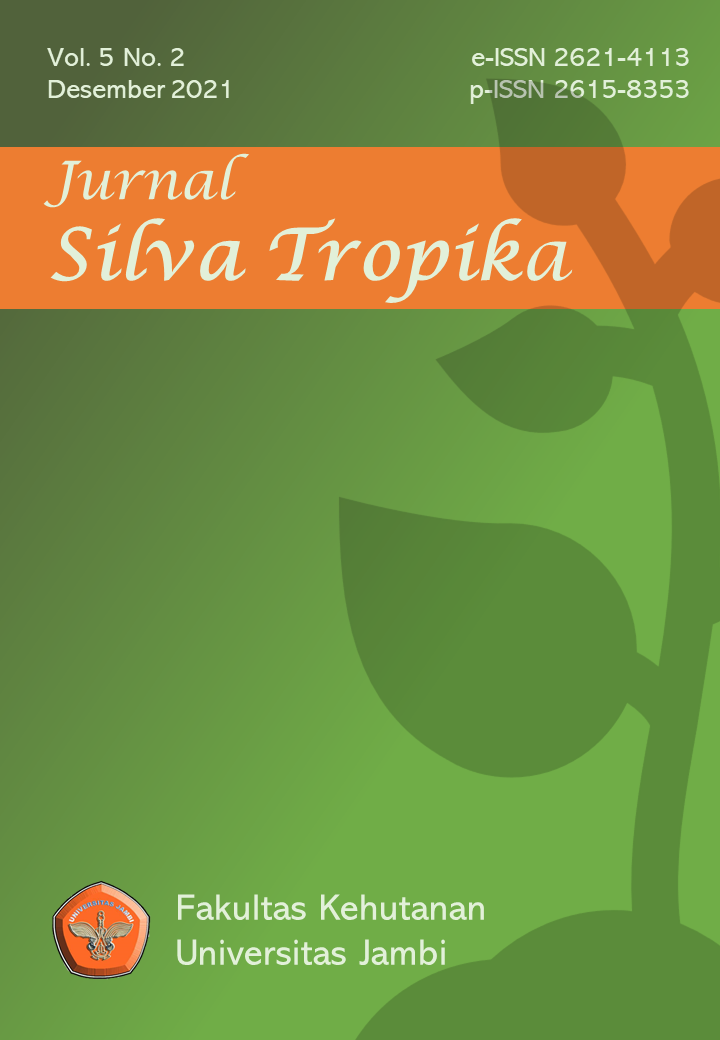INVASIVENESS IDENTIFICATION: A STUDY CASE FROM LANTANA
Keywords:
DNA Barcode, Lantana, invasive alien plant speciesAbstract
Invasion by invasive species represents one of the greatest threats to biodiversity worldwide, causing degradation and loss of habitat. Among them, one species belonged to the Verbenaceae family, namely Lantana camara, which includes 100 of the world’s worst invasive species. Distinguishing invasive from non-invasive species based on morphology alone is often difficult for plants in a vegetative stage, especially in Lantana, where they have complex morphological characters. In this regard, DNA barcoding may become a good alternative. This study aimed to select and provide a DNA barcode region that capable of distinguishing the invasive and non-invasive Lantana. Four DNA Barcode markers available in the sequence database (NCBI and BOLD), namely matK, rbcL, psba-trnh, and ITS2, were used to identify the invasiveness of various Lantana. A total of 132 data sequences from 17 species of Lantana were collected. The sequences were aligned and constructed into a dendrogram using MEGA X through the Neighbor-Joining method. This study shows that it is possible to distinguish Lantana camara from a series of closely related congeners by plastid base gene (matk and rbcl). The constructed phylogeny tree shows that invasive species Lantana camara was in a different clade with non-invasive Lantana.
Downloads
References
Agaldo, J. A. 2020. Ecology of Lantana camara: An invasive plant species in Amurum Forest Reserve, Jos Plateau, Central Nigeria. African Journal of Ecology. 58(2), 291-298.
Amandita FY, Rembold K, Vornam B, Rahayu S, Siregar IZ, Kreft H, Finkeldey R. 2019. DNA barcoding of flowering plants in Sumatra, Indonesia. Ecology and Evolution. 9:1858-1868
Atkins, S. 2004. Verbenaceae. Flowering Plants. Dicotyledons. Berlin. Springer.
Chase MW, Cowan RS, Hollingsworth PM, van den Berg C, Madriñán S, Petersen G, Wilkinson M. 2007. A proposal for a standardized protocol to barcode all land plants. Taxon. 56:295–299.
Chen G, Gilbert MG. 1994. Verbenaceae. In: Wu ZY & Raven PH (eds.). Flora of China. Vol. 17. Science Press. Beijing.
Cowan RS, Fay MF. 2012. Challenges in the DNA barcoding of plant material. Molecular Biology. 862: 23–33.
Darling JA, Michael AE, Blum J. 2007. DNA-based methods for monitoring invasive species: a review and prospectus. Biol Invasions. 9:751–765
Ghahramanzadeh R, Esselink G, Kodde LP, Duistermaat H, Van Valkenburg JLCH, Marashi SH, Smulders MJM, Van De Wiel CCM. 2013. Efficient distinction of invasive aquatic plant species from non-invasive related species using DNA barcoding. Molecular Ecology Resources. 13:21–31.
Ghisalberti EL. 2000. Lantana camara L. Verbenaceae. Fitoterapia. 71:467-486
Hajibabaei M, de Waard JR, Ivanova NV, Ratnasingham S, Dooph RT, Kirk SL, Hebert PDN. 2005. Critical factors for assembling a high volume of DNA barcodes. Philosophical Transactions of the Royal Society B. 360: 1959–1967.
Hebert PDN, Cywinska A, Ball SL, deWaard JR. 2003. Biological identifications through DNA barcodes. Proceedings of the Royal Society B: Biological Sciences. 270:313–321.
Kress WJ, Erickson DL. 2007. A two‐locus global DNA barcode for land plants: The coding rbcL gene complements the non‐coding trnH-psbA spacer region. PLoS ONE. 2:e508.
Kress WJ, Wurdack KJ, Zimmer EA, Weigt LA, Janzen DH. 2005. Use of DNA barcodes to identify flowering plants. Proceedings of the National Academy of Sciences of the United States of America. 102: 8369–8374.
Nei M, Kumar S. 2000 Molecular evolution and phylogenetics. New York. Oxford University Press.
Parsons WT, Cuthbertson EG. 1992. Noxious weeds of Australia. Melbourne. Inkata Press.
Pimentel D, Zuniga R, Morrison D. 2005. Update on the environmental and economic costs associated with alien-invasive species in the United States. Ecological Economics. 52:273–288.
Salimena FRG. 2002. Novos sinônimos e tipificações em Lippia sect. Rhodolippia (Verbenaceae). Darwiniana. 121-125.
Shackleton RT, Witt AB, Aool W, Pratt CF. 2017. Distribution of the invasive alien weed, Lantana camara, and its ecological and livelihood impacts in eastern Africa. African Journal of Range & Forage Science. 34(1):1-11.
Silva TRS. 1999. Redelimitação e revisão taxonômica do gênero Lantana L. (Verbenaceae) no Brasil. Dissertation, PhD thesis, Universidade Federal de Sao Paulo.
Tamura K, Stecher G, Peterson D, Filipski A, Kumar S. 2013. MEGA6: Molecular evolutionary genetics analysis version 6.0. Molecular Biology and Evolution. 30: 2725–2729.
Thompson JD, Higgins DG, Gibson TJ. 1994. CLUSTAL‐W – Improving the sensitivity of progressive multiple sequence alignment through sequence weighting, position‐specific gap penalties, and weight matrix choice. Nucleic Acids Research. 22: 4673–4680.
Zhang W, Fan X, Zhu S, Zhao H, Fu L. 2013. Species-specific identification from incomplete sampling: applying DNA barcodes to monitoring invasive solanum plants. PLoS ONE. 8(2):e55927.













